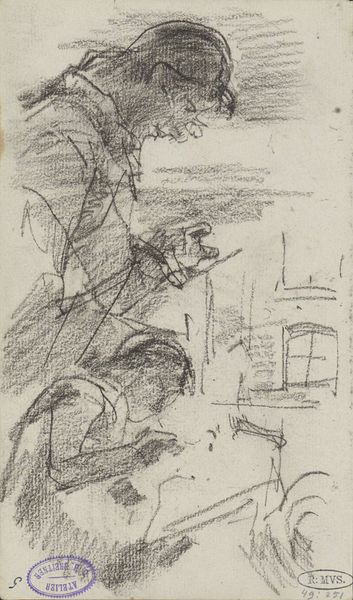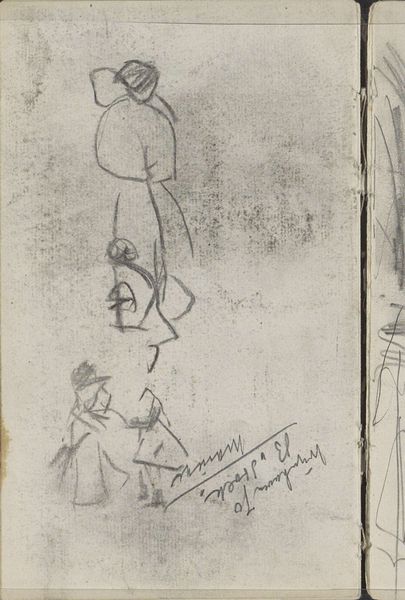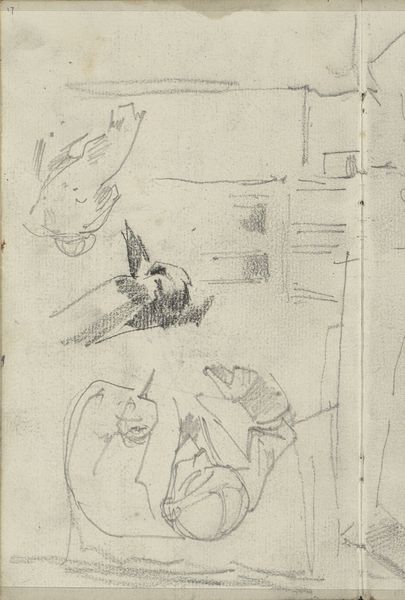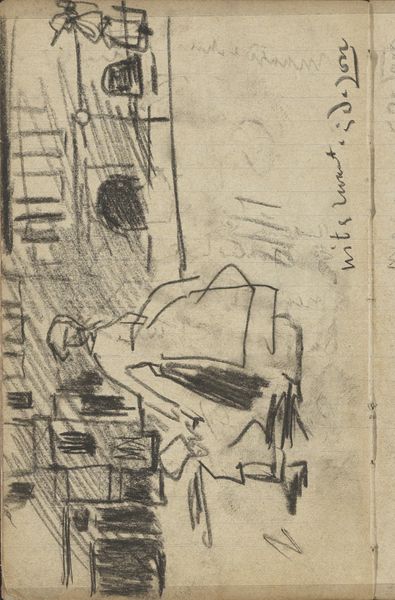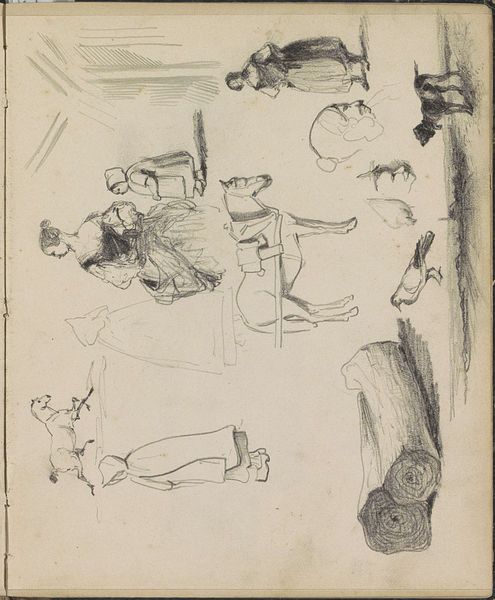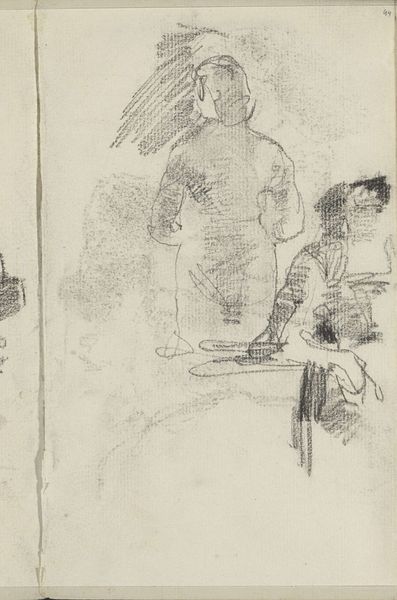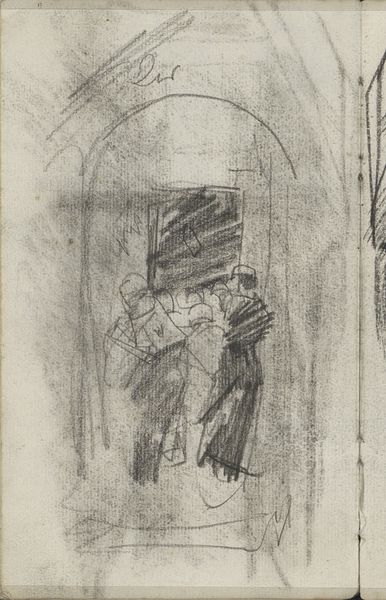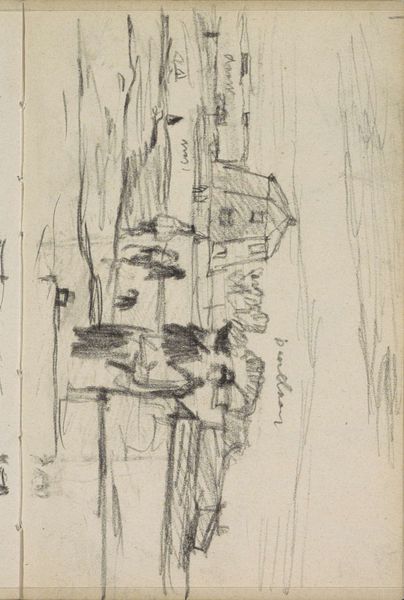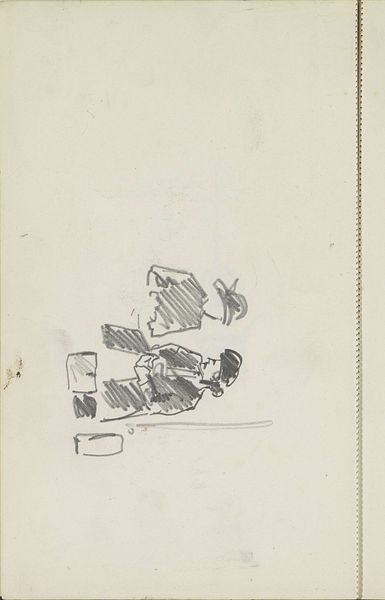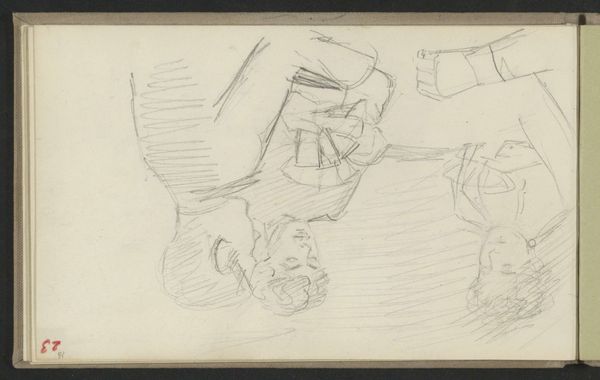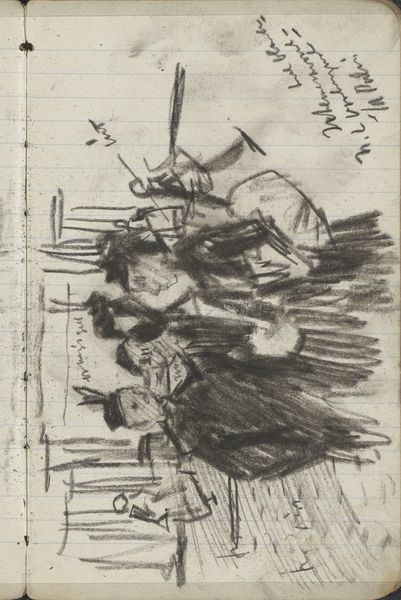
Copyright: Rijks Museum: Open Domain
Curator: George Hendrik Breitner's drawing, "Mannen aan tafels, onder andere Van Hall," created around 1895-1898, is currently held here at the Rijksmuseum. The work renders men seated at tables and it appears to be done in pencil. Editor: Immediately, the rapid strokes and incomplete forms evoke a sense of transience and urgency. It feels like a fleeting moment captured on paper. Curator: It does. Breitner was known for capturing the raw energy of urban life in Amsterdam, and this drawing seems to exemplify that. Consider how the subjects are presented: figures sketched in informal settings. Do you feel that this contributes to a sense of authenticity? Editor: Definitely. The lack of precise details makes it less about portraying specific individuals and more about conveying the atmosphere of the scene. Notice the contrast between the darker lines defining the figures and the sparse background; it emphasizes their presence without boxing them into a space that feels completely rendered. Curator: These individuals occupy spaces but their identity is blurred within their historical context. Breitner, working during a period of significant social change, may have intentionally created ambiguity regarding these figures. The Industrial Revolution, for instance, had a profound effect on class identity in urban environments. Editor: So, is this incompleteness also reflecting the transitional nature of the period itself? Interesting. Returning to form, do you see that the dynamism of line and shadow makes up the picture, with the stark whiteness of the page as a kind of…negative space, actively contributing? Curator: The medium, pencil on paper, is critical as well. Breitner was able to produce artworks at great speed, rendering social and political scenes. The sketchlike style lends itself well to this purpose, as he was deeply involved in leftist political activism. Editor: It really makes you think about intention and medium. What is the value of conveying the historical importance of an artwork through an inherently unfinished formal method? Curator: Perhaps it’s precisely that ‘unfinished’ quality which encourages the viewer to consider all the forces, often conflicted and competing, at play. Breitner invites us to consider what elements converge in this candid vision. Editor: I see now that the drawing isn’t trying to be definitive; it’s prompting inquiry, revealing what exists as a site of contention and change, and as potential too.
Comments
No comments
Be the first to comment and join the conversation on the ultimate creative platform.

